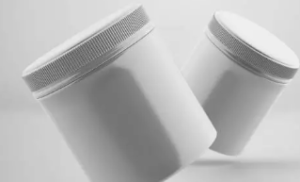Tablet Bottle Packaging: The Rise of BPA-Free Tablet Bottle Packaging
In the fast-paced world of consumer goods, packaging plays a crucial role in product safety and preservation. From food to pharmaceuticals, the materials used for packaging can have a significant impact on both the product and the consumer’s health. One such material that has come under scrutiny in recent years is bisphenol A (BPA), a chemical compound commonly found in plastic containers and coatings. Concerns about the potential health risks associated with BPA exposure have led to a growing demand for BPA-free alternatives, particularly in the pharmaceutical industry. This has paved the way for the rise of BPA-free tablet bottle packaging, offering consumers a safer and more environmentally friendly option.
Understanding BPA and Its Risks
 Bisphenol A is an artificial chemical that is used to make epoxy resins and polycarbonate plastics. Because it makes plastics strong and durable, it has been used in many market goods for many years, such as water bottles, food containers, and medical devices.
Bisphenol A is an artificial chemical that is used to make epoxy resins and polycarbonate plastics. Because it makes plastics strong and durable, it has been used in many market goods for many years, such as water bottles, food containers, and medical devices.
Studies have linked BPA exposure to various adverse health effects, including hormonal imbalances, reproductive issues, and an increased risk of certain cancers. Due to their developing bodies and sensitive hormone systems, pregnant women, babies, and young children are more likely to be affected by BPA. As a result, governments around the world have limited the use of BPA in some goods, which has made people look for alternatives more and more.
The Shift Towards BPA-Free Packaging
In response to growing concerns about BPA exposure, manufacturers have begun to develop BPA-free alternatives for packaging materials. These alternatives are typically made from materials such as polyethylene (PET), polypropylene (PP), or high-density polyethylene (HDPE), which are free from BPA and other harmful chemicals.
One area where the shift towards BPA-free packaging has been particularly notable is in the pharmaceutical industry. Medications, particularly tablets and capsules, are often packaged in plastic bottles to ensure freshness, stability, and ease of dispensing. However, concerns about potential BPA exposure from these containers have prompted pharmaceutical companies to seek out safer alternatives.
Advantages of BPA-Free Tablet Bottle Packaging
BPA-free tablet bottle packaging offers several advantages over traditional packaging materials:
- Healthier Option: Perhaps the most significant advantage of BPA-free packaging is its potential to reduce exposure to harmful chemicals. By eliminating BPA from the manufacturing process, these packaging materials help protect consumers, especially vulnerable populations such as pregnant women and children, from potential health risks.
- Environmental Sustainability: In addition to health benefits, BPA-free packaging is also more environmentally sustainable. Many BPA-free materials are recyclable, reducing the overall environmental impact of packaging waste.
- Product Integrity: BPA-free tablet bottle packaging materials are designed to maintain the freshness of the products they contain. Whether storing pharmaceuticals or dietary supplements, these containers help protect the potency and effectiveness of the enclosed tablets or capsules, ensuring that consumers receive the full benefit of their medication.
- Consumer Confidence: As awareness of BPA and its potential health risks continues to grow, consumers are increasingly seeking out products that are free from this chemical compound. By adopting BPA-free packaging, pharmaceutical companies can demonstrate their commitment to consumer safety and build trust with their customers.
Challenges and Considerations
While the shift towards BPA-free tablet bottle packaging offers many benefits, it also presents challenges and considerations for manufacturers:
- Cost: BPA-free packaging materials may be more expensive to produce than traditional options, potentially increasing manufacturing costs for pharmaceutical companies. However, as demand for BPA-free products continues to rise, economies of scale may help reduce costs over time.
- Supply Chain Considerations: Switching to BPA-free packaging may require adjustments to the supply chain, including sourcing new materials and retooling production processes. Manufacturers must carefully evaluate the feasibility and impact of these changes to ensure a smooth transition.
- Regulatory Compliance: Many government agencies have taken steps to limit the use of BPA in some goods. However, manufacturers must still make sure that their BPA-free packaging materials meet all safety and regulatory requirements. This may require rigorous testing and certification processes to verify the safety and efficacy of the new packaging materials.
The shift towards BPA-free tablet bottle packaging represents a significant step forward in promoting consumer health and safety. By eliminating bisphenol A and other harmful chemicals from packaging materials; pharmaceutical companies can offer consumers a safer and more environmentally friendly option for storing medications. While challenges remain, the growing demand for BPA-free products and advancements in packaging technology are driving innovation in the industry.





Comments are Disabled